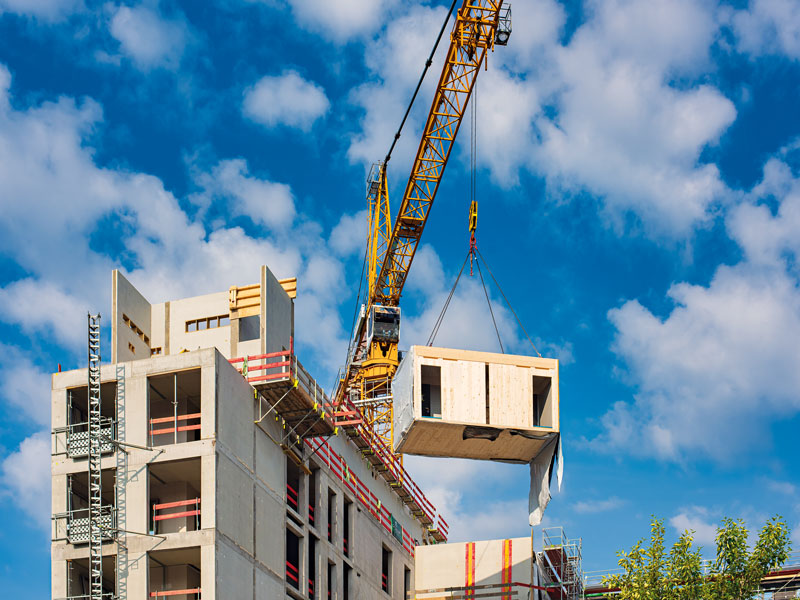The construction industry has been one of the slowest productivity sectors of the 21st century. That’s about to change, thanks to prefabrication and modular construction. Prefab isn’t new; it’s been around for a hundred years. Architect Frank Lloyd Wright dabbled with prefab in 1937 to construct his winter home, Taliesin West, by experimenting with tilt-up walls. They weren’t perfect, but the walls were made quickly and used available materials: rocks and sand.
Modular construction has long suffered from branding issues, possibly because of its association with manufactured/mobile housing. Some consumers perceived prefab building materials as inferior quality, used only for temporary fixes. These outdated connotations about prefab structures are changing, thanks to changes initiated by construction industry leaders.
Modular construction benefits
Modern construction trends include offsite production that uses manufacturing principles. The result is increased efficiency, lowered costs, and better quality materials – all of which may solve shortages in housing and labor.
Once onsite, modular walls have the added benefit of flexibility. Advanced technology has made it possible for workers to switch out on-load-bearing walls with other materials or remove them entirely, allowing for reconfiguration of the space. Adaptable features suggest that a building can grow with its occupants’ needs, saving money and downtime.
The prefab process is predictable, precise and practical.
Re-imagining the building industry also may require rethinking prefab construction and modular construction salaries.
Construction industry leaders rethink construction salaries
Currently, the labor cost on a construction project averages 30% of the project’s total cost. How would cutting that percentage in half change your bidding?
If you’re thinking about embracing prefab, you’ll also need a flexible approach to setting your construction salaries because the work will be divided between two groups – the manufacturers and the onsite crew.
Much of modular construction manufacturing happens offsite. The prefab process may include the entire outer shell, walls, and even the plumbing fittings. Then the materials are transported to the construction site, where lean onsite crews can assemble the build in less time than traditional construction once required.
Operating crews with fewer members and spending less time at the building site allows you to rethink your team’s construction salaries. They’ll be able to complete more projects in less time. Faster builds could mean more money for them – and you.
If you’d like to explore current salary ranges in the construction industry, a recruiter can advise you about trends and where to find the skilled labor you need. You may find what a boost to your company prefab and modular construction can be.








Leave A Comment